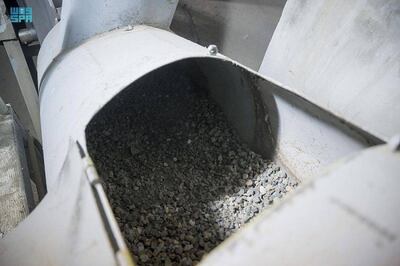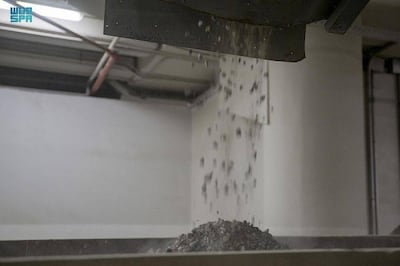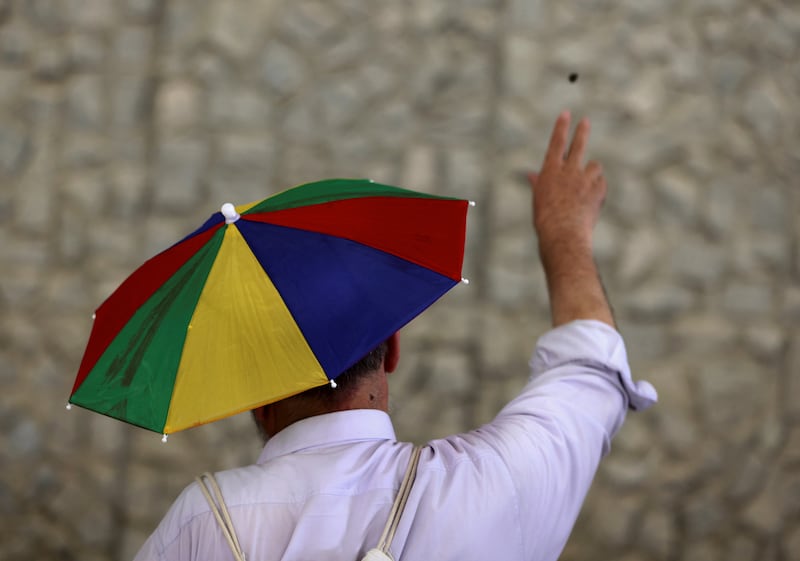Read the latest updates on the Hajj pilgrimage here
With more than 1.8 million pilgrims performing Hajj this year, the number of pebbles thrown during the stoning the devil ritual may be more than any one complex can handle.

Kedana, the main developer of the holy sites, told the Saudi Press Agency that the process of dealing with the stones begins on the first day of the stoning of the devil, immediately after the pilgrims complete the rite.
The pebbles fall 15m into the basement, where a conveyor belts collect them.
They are then sifted and sprayed with water to get rid of dust and other impurities.
Finally, they are transported to a storage centre where they will be sorted after the end of the pilgrimage.
Experts say tonnes of pebbles are needed, given the number of pilgrims expected every year.
Kedana provides bags of pebbles for the stoning rite at the start of every Hajj season.
There are about 300 collection points for pilgrims in Muzdalifah, apart from the Jamarat Bridge complex in Mina.








